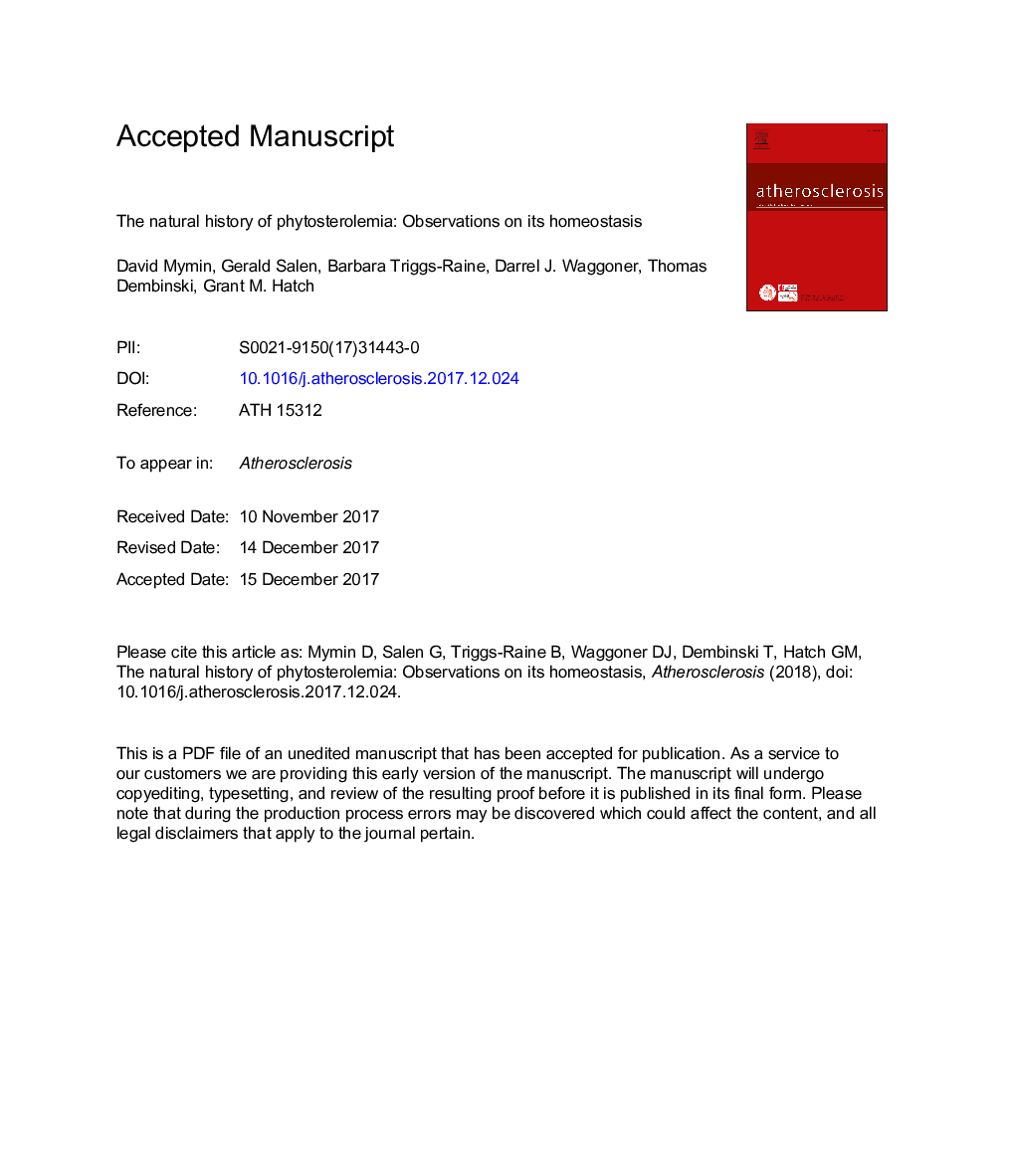| Article ID | Journal | Published Year | Pages | File Type |
|---|---|---|---|---|
| 8657008 | Atherosclerosis | 2018 | 34 Pages |
Abstract
This evidence of a link with age leads us to propose that an age-related change in cholesterol and sterol homeostasis occurs at puberty in phytosterolemia and that the change is due to high sterol and/or stanol levels causing feedback inhibition of sterol regulatory element-binding protein (SREBP-2) processing. This would explain the well-documented phenomenon of depressed cholesterol synthesis in phytosterolemia. It is also well-known that LDL-receptor activity is increased, and this feasibly explains reduced LDL levels and consequent reduction of plasma cholesterol and sitosterol levels. Downregulated SREBP-2 processing would be expected to also lower proprotein convertase subtilisin/kexin type 9 (PCSK9) levels and this would explain high LDL-receptor activity. The above state could be termed disrupted homeostasis and the alternative, seen mostly in children and characterized by hypercholesterolemia and hypersterolemia, simple homeostasis.
Keywords
Related Topics
Health Sciences
Medicine and Dentistry
Cardiology and Cardiovascular Medicine
Authors
David Mymin, Gerald Salen, Barbara Triggs-Raine, Darrel J. Waggoner, Thomas Dembinski, Grant M. Hatch,
